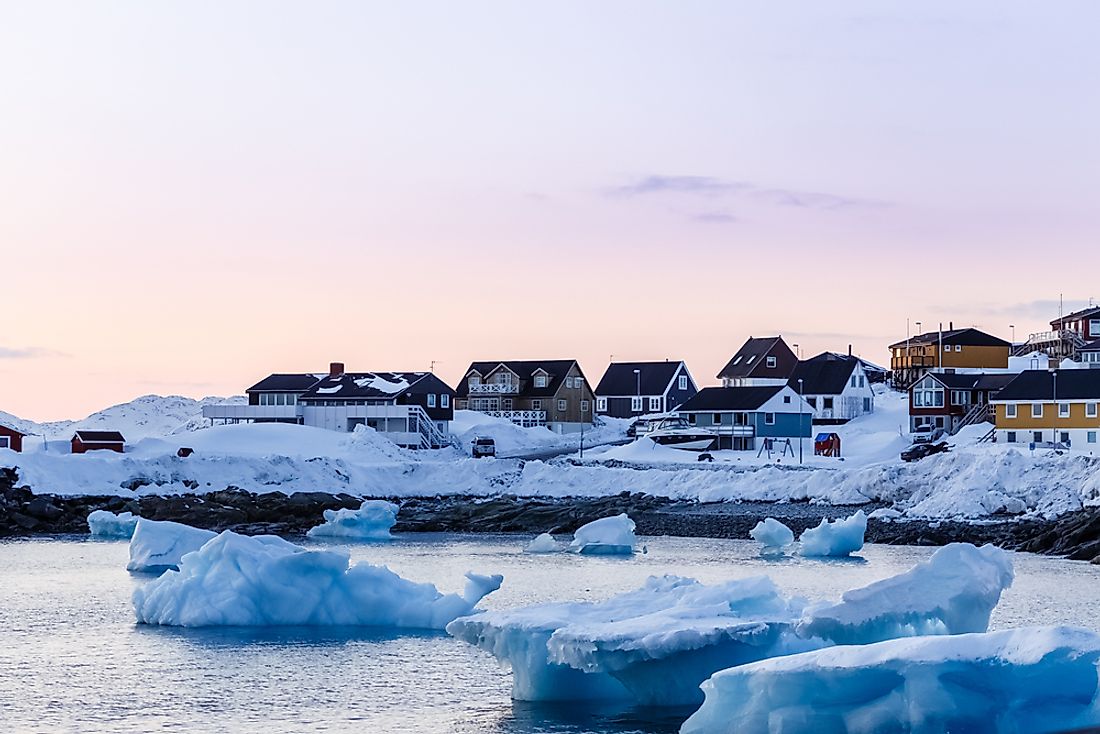What Continent Is Greenland Part Of?

Greenland is a large autonomous region which is considered to be a part of the Kingdom of Denmark. Greenland is one of the countries which are said to be trans-continental countries (countries lying on more than one continent). The reason behind this classification is because geographically, Greenland is classified under North America as it lies on the North American tectonic plate while politically, the country is recognized as part of Europe.
Cultural Background
The cultural history of Greenland can be used to identify whether the large island lies in North America or is in Europe. The earliest inhabitants of Greenland were the Paleo-Eskimo tribes who through their archeological artifacts are estimated to have settled on the island as early as the 26th century BC. Another community which was residing in the prehistoric Greenland was the Saqqaq people who inhabited the island between the 25th century BC and the 9th century BC and their settlements were around Disko Bay. These early inhabitants of Greenland are believed to have originated from North America before settling in Greenland. Other subsequent settlers of the island who also originated from North America (in present-day Canada) include the Dorset, the Independence I and the Independence II cultures who inhabited Greenland for hundreds of years.
Inuit Inhabitants
The people who are presently recognized as constituting the native population in Greenland are the Kalaallit people, and an ethnic group made up of indigenous Inuit people residing in the western region of the country. The Inuit first settled in Greenland in the 13th century after migrating from North America. The Inuit who have resided in Greenland for centuries, therefore have North American ancestry.
The Earliest European Settlers
Perhaps the earliest Europeans to settle in Greenland were the Norsemen from Norway, with the earliest Norse settlements in Greenland being traced back to 986 AD. These early Norsemen had traveled on their boats from Iceland where they fled to evade persecution from King of Norway and proceeded to establish settlements which thrived for centuries. The Norsemen had great influence in the cultural heritage of Greenland, with the name “Greenland” having Norse origins. According to historian, Erik the Red who was one of the earliest Norsemen in Greenland named the island “Groenland” in an attempt to lure more settlers using the pleasant name. Despite the great influence Norway had over Greenland through the Norse settlers, the Kingdom of Norway did not recognize the island until the 13th century when it was established as part of the kingdom with inhabitants submitting to the King. The Norse settlement in Greenland persisted until the 15th century when they suddenly disappeared, in what is believed to have been caused by the effects of the Little Ice Age experienced during that century.
Denmark’s Sovereignty Over Greenland
Greenland is an autonomous region within the Kingdom of Denmark and the Queen of Denmark, Queen Margrethe II is recognized as the head of state of Greenland, a position she has held since 1972. The island became part of the Kingdom of Denmark in the early 18th century after the Danish monarch asserted sovereignty in Greenland. Soon afterward, Greenland received scores of traders from Denmark who settled in the island. Norway would later lay claim on eastern Greenland in 1931 leading to a diplomatic row between Denmark and Norway and was resolved by the Permanent Court of International Justice in 1933 which ruled in favor of the Kingdom of Denmark.







